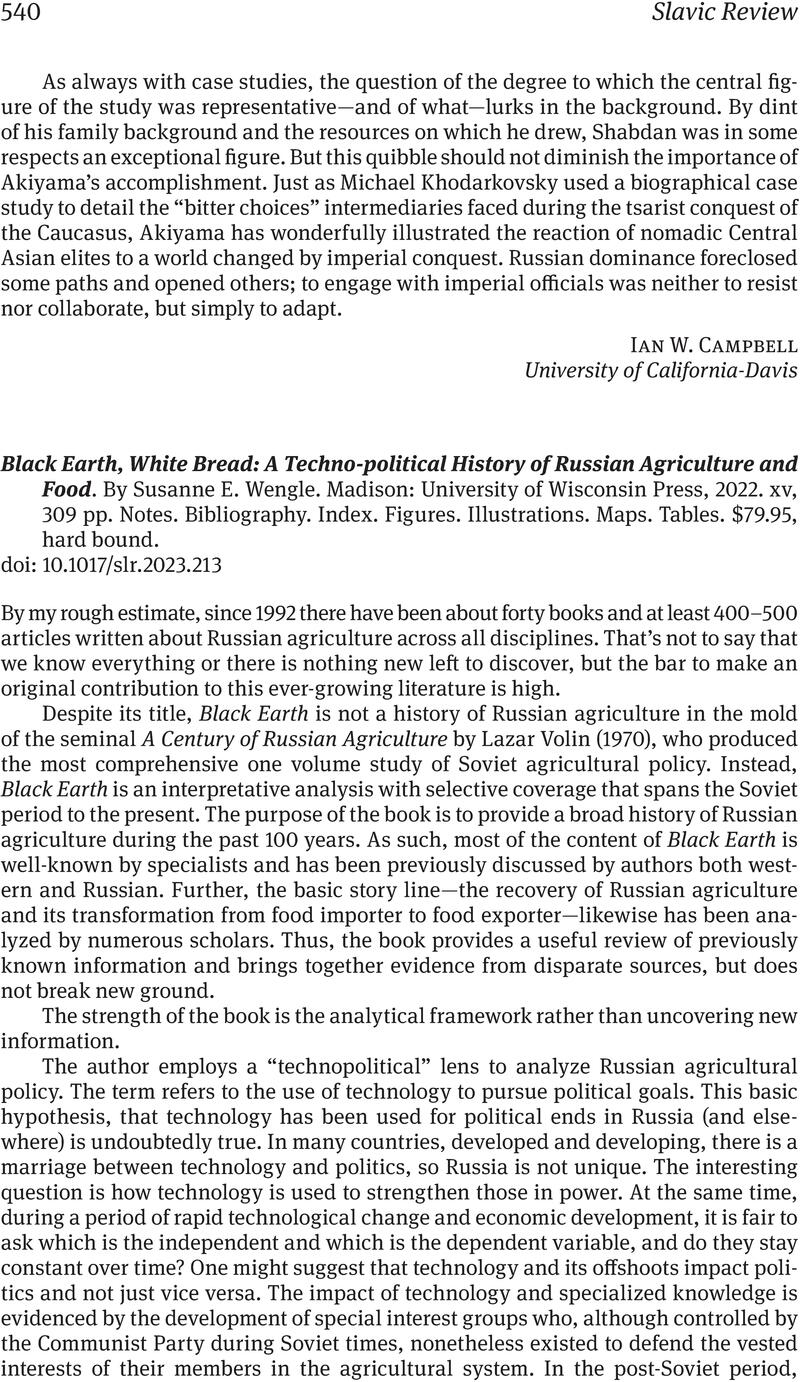No CrossRef data available.
Article contents
Black Earth, White Bread: A Techno-political History of Russian Agriculture and Food. By Susanne E. Wengle. Madison: University of Wisconsin Press, 2022. xv, 309 pp. Notes. Bibliography. Index. Figures. Illustrations. Maps. Tables. $79.95, hard bound.
Review products
Black Earth, White Bread: A Techno-political History of Russian Agriculture and Food. By Susanne E. Wengle. Madison: University of Wisconsin Press, 2022. xv, 309 pp. Notes. Bibliography. Index. Figures. Illustrations. Maps. Tables. $79.95, hard bound.
Published online by Cambridge University Press: 01 November 2023
Abstract
An abstract is not available for this content so a preview has been provided. Please use the Get access link above for information on how to access this content.

- Type
- Book Review
- Information
- Copyright
- Copyright © The Author(s), 2023. Published by Cambridge University Press on behalf of the Association for Slavic, East European, and Eurasian Studies


